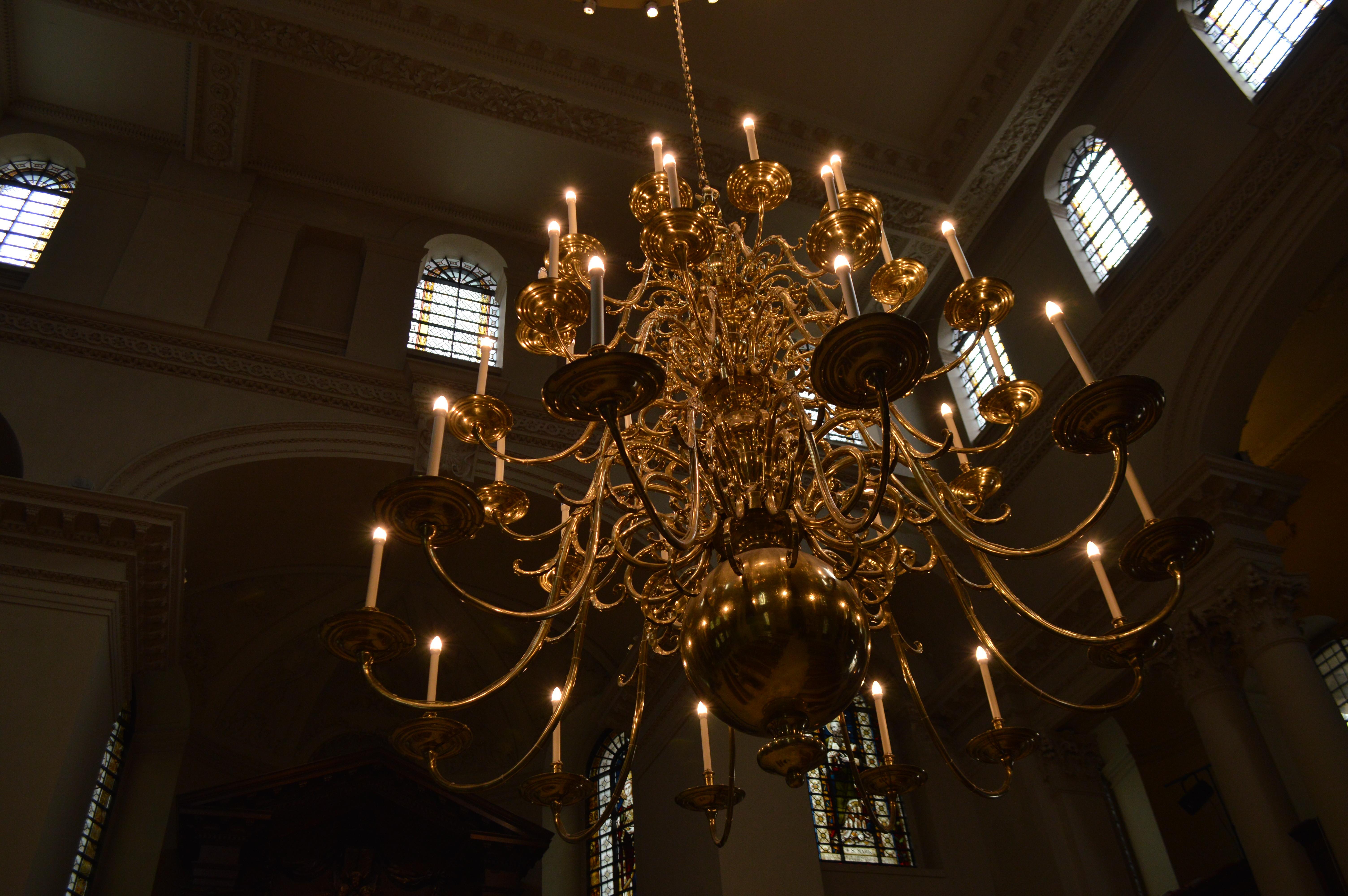
Nicholas Hawksmoor
The devil’s architect
by Sarah Crossland, Engagement Manager
Nicholas Hawksmoor (probably 1661 to 25 March 1736) was an English architect and a leading figure of the English Baroque style. He worked with some of the principal architects of the time and contributed to the design of some of the most notable buildings of the period.
whatever is goode in its kinde ought to be preserv'd in respect for antiquity, as well as our present advantage, for destruction can be profitable to none but such as live by it
: Nicholas Hawksmoor
Hawksmoor was born in Nottinghamshire in 1661, into a yeoman farming family. At age 18 he became a clerk for Sir Christopher Wren, and worked with him on all his major projects. Hawksmoor emerged as one of the great masters of the English Baroque.
Hawksmoor was responsible for six new churches in London.
Each different, each is unique.
They are his best known independent works of architecture.
They are landmarks not only because of their size and colour, but because they are like no other buildings in Britain. Hawksmoor transcended the conventions of his era to place something truly original in public view. He was a postmodernist before postmodernism, raiding history for motif and ornament, and arranging them into something new. He was a 'dream architect', plucking forms from the subconscious and deploying them to boggle our minds.
: David Shariatmadari, writing in The Guardian
Hawksmoor was also an active freemason. It has been argued that there are hidden symbols amongst the obelisks, pyramids and imitation altars that feature in the architecture of his London churches. Hawksmoor was also an active freemason, earning him the somewhat unjustified nickname of the 'devil's architect'.
Hawksmoor churches are brilliantly unusual and well worth visiting!

AndreaVail
1712 to 1718
The first church built under the Fifty New Churches Act of 1711 and the first complete church project undertaken by Hawksmoor completed in 1718.
There has been a church here for over a thousand years, dedicated to Alfege, Archbishop of Canterbury, who was martyred here in 1012. Henry VIII was baptised here and many other historical figures in royal, maritime and scientific history have close links.
Master craftsmen working with Hawksmoor in St Alfege church were also working in other main sites in Greenwich and London. The design and carving of the pulpit and the Corinthian capitals on these pillars are attributed to Grinling Gibbons and the wrought iron altar rails and balcony rails were designed by French craftsman Jean Tijou. The elaborate columns and cornices are the original Hawksmoor design, with the main pilasters at the east end and the apse were originally painted by Sir James Thornhill, better known for his work in the Painted Hall of the Old Royal Naval College.
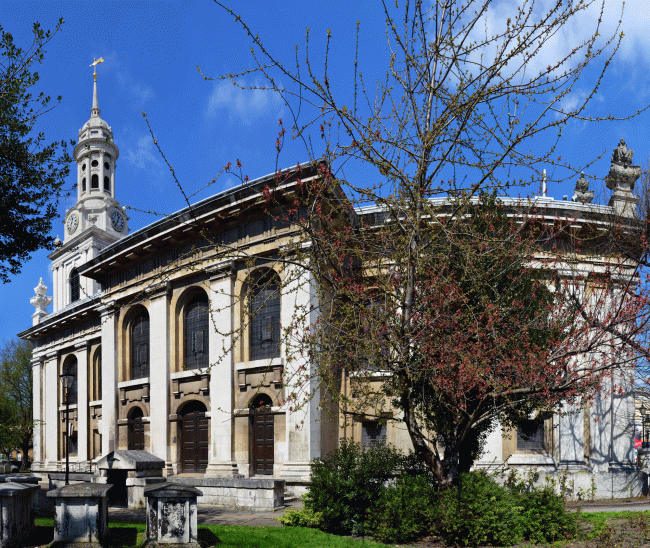
1714 to 1729
Step inside Hawksmoor's architectural masterpiece where the City of London meets the East End. At the time building, Spitalfields was a place of religious and political dissent. Hawksmoor's mighty white stone church was designed to sail, architectural guns blazing, into this harbour of discontent, stamping the authority of crown, parliament and the Church of England onto renegade pavements. It is not difficult to imagine how imposing this stupendous construction must have seemed.
Famed for the eloquence of its stonework, Christ Church Spitalfields is also full of fascinating human stories. In the 1980s a project to excavate 1,000 bodies from its crypt helped to change the way archaeological dating is done. It has been the site of scandal (a furore in the 1820s over the huge expense by Christ Church vestrymen on new furnishings saw the case going to Parliament, and laws changed on the power of vestries) and also of spectacle: in recent years the church has hosted many grand events including opera, classical music premieres, a documentary and dinner to celebrate the work of local artists Gilbert & George, and performances by pop acts Mika and The Feeling.
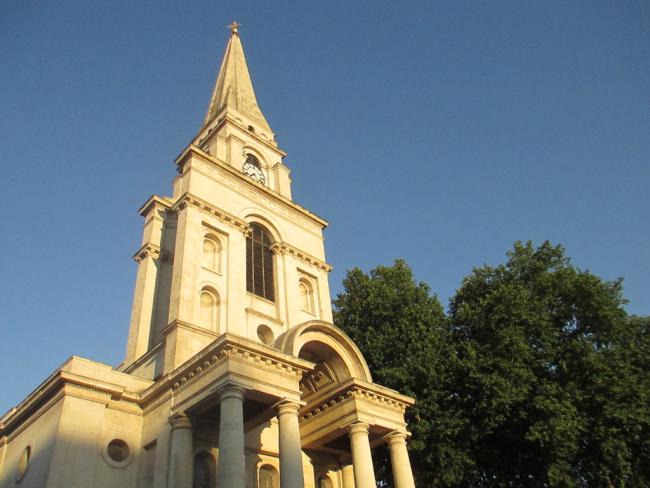

MattBrown
whatever is goode in its kinde ought to be preserv'd in respect for antiquity, as well as our present advantage, for destruction can be profitable to none but such as live by it : Nicholas Hawksmoor
1714 to 1729
St George in the East, Shadwell
St George's has a uniquely complex skyline. As well as the western tower there are four 'pepperpot' turrets, each large enough to form the tower of an ordinary church. These had some practical excuse: each marks the position of a spiral staircase that originally led to the great galleries. There were no less than nine doorways into the church, with separate entrances for the different classes according to their ability to pay for better or worse seats.
In May 1941 St George's was severely damaged by an incendiary bomb during the Blitz, leaving only the outer walls, vestry, Lady Chapel, the 160 tower and all the turrets. All the interior was burnt, except for the still visible fire shattered fragments of the capitals of pilasters on the east and west walls. Legend has it that one pair of cherubic heads in the apse plasterwork survived the Blitz, the rest is a faithful replica of the original.
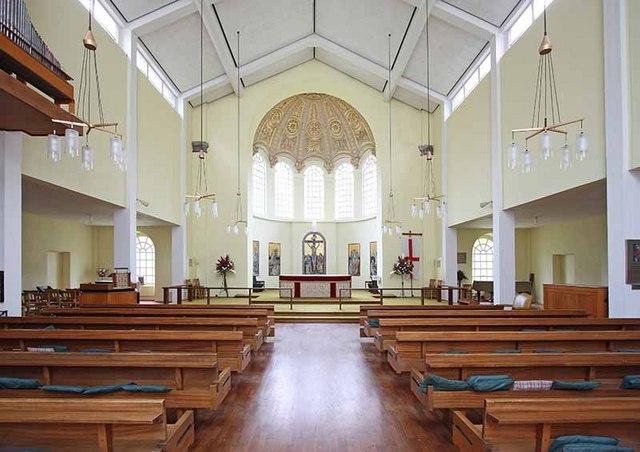
1714 to 1730
Like other Hawkmoor churches, St Anne’s has a tower rising in steps, diminishing in size towards the top. A striking pyramid was designed to go on a corner at the east end, but it is now in the churchyard.
The church has a long standing connection to the Royal Navy. Its clock is the highest church clock in London, and was designed as a special maritime clock for shipping on the Thames: it chimed every 15 minutes to guide the 6000 ships that moored in the docks every day. These days, it chimes every hour.
Above the clock, there is a golden ball, which until recently was a Trinity House sea mark for navigating the Thames.
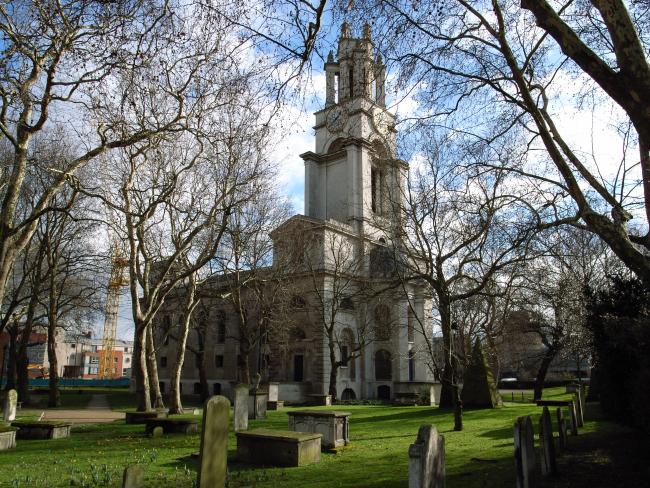
Strong Reason and good fancy, joyn'd with experience and tryalls, so that we are assured of the good effects of it
: Nicholas Hawksmoor
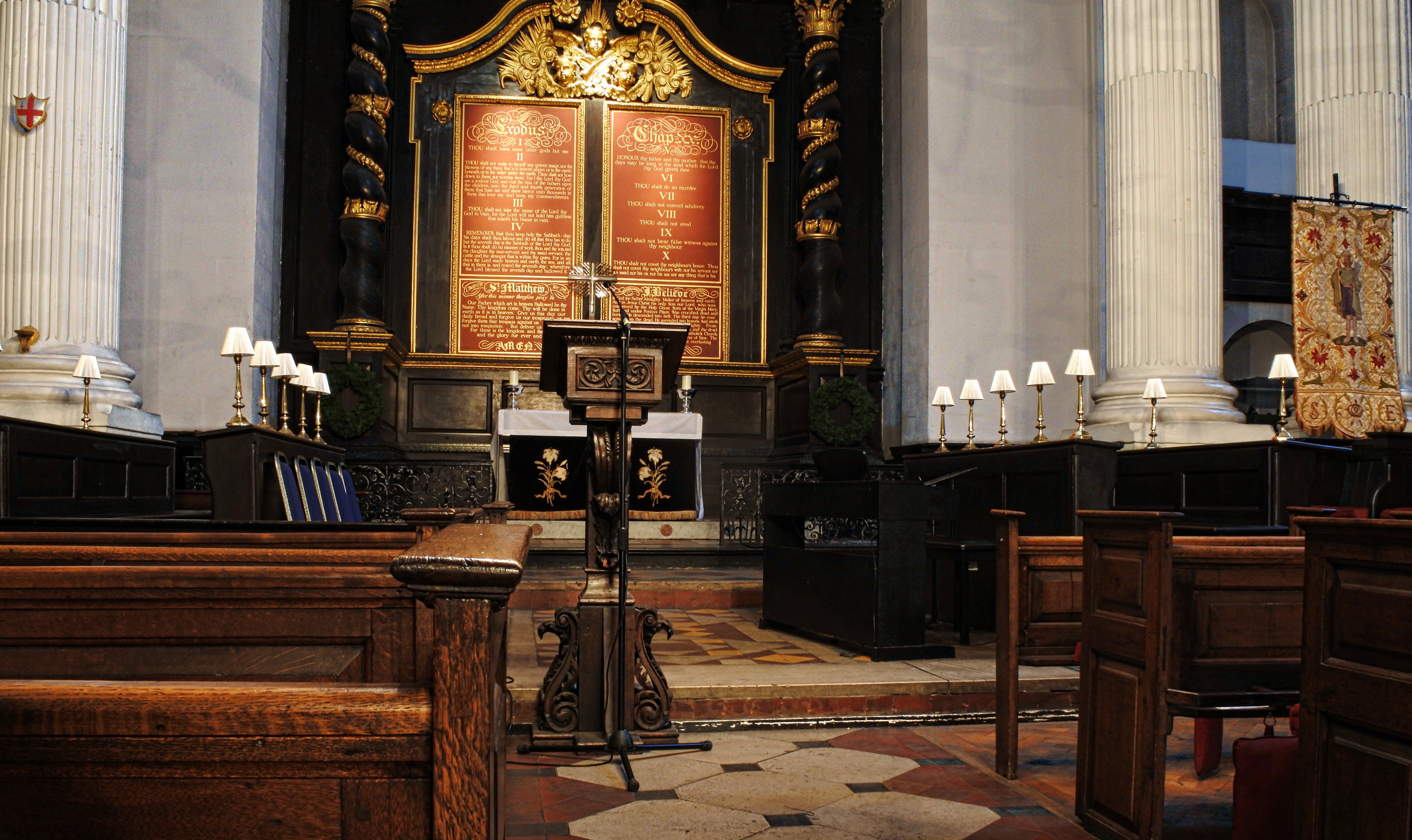
ItsNoGame
Strong Reason and good fancy, joyn'd with experience and tryalls, so that we are assured of the good effects of it : Nicholas Hawksmoor
1716 to 1723
St Mary Woolnoth, City of London
On Easter Day 1727 St Mary Woolnoth of the nativity was reopened after it’s rebuilding by Nicholas Hawksmoor, which took 12 years and was paid for from the proceeds of the tax on sea borne coal.
St Mary’s has charisma bordering on the sublime.
Outside, it looks like a Greek temple with angular parallel lines that wouldn’t look out of place at Tate Modern. Inside are Corinthian columns laid out as triplets in ‘a square within a square’. The church is built on an impossibly small triangle of land between busy streets, but push open its formidable doors and you enter a world that hasn’t changed for hundreds of years.
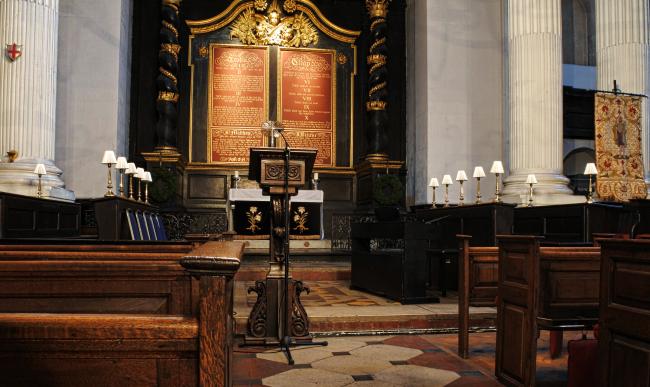
1716 to 1731
St George's Bloomsbury, the last designed by Hawksmoor, is one of the finest Baroque churches in London and indeed has been described as ‘one of the capital’s most wonderful buildings’.
Hawksmoor never visited the great classical sites, but he was a keen antiquarian and his work is peppered with references to famous Greek and Roman monuments. The famous stepped tower is influenced by Pliny the Elder's description of the Mausoleum at Halicarnassus, and topped with a statue of King George I in Roman dress. Its statues of fighting lions and unicorns symbolise the recent end of the First Jacobite Rising.
These symbols would have been well known at the time because of the popular nursery rhyme; 'The lion and the unicorn were fighting for the crown, the lion beat the unicorn all around the town'.
The Portico is based on that of the Temple of Bacchus in Baalbek, Lebanon. The tower is depicted in William Hogarth's well known engraving ‘Gin Lane’ (1751) and Charles Dickens used St George's as the setting for ‘The Bloomsbury Christening’ in Sketches by Boz.
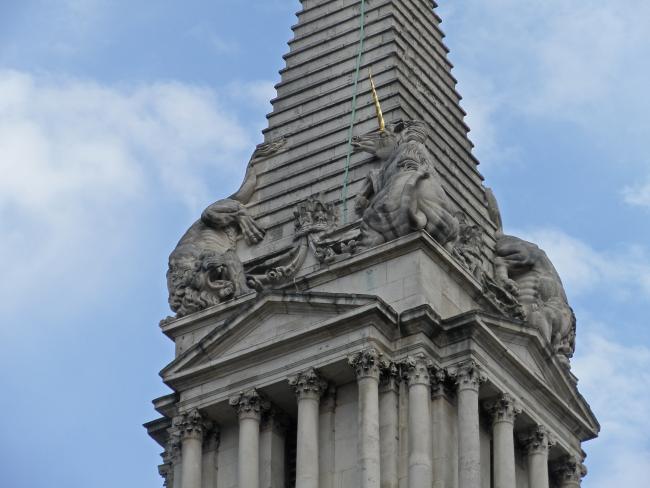
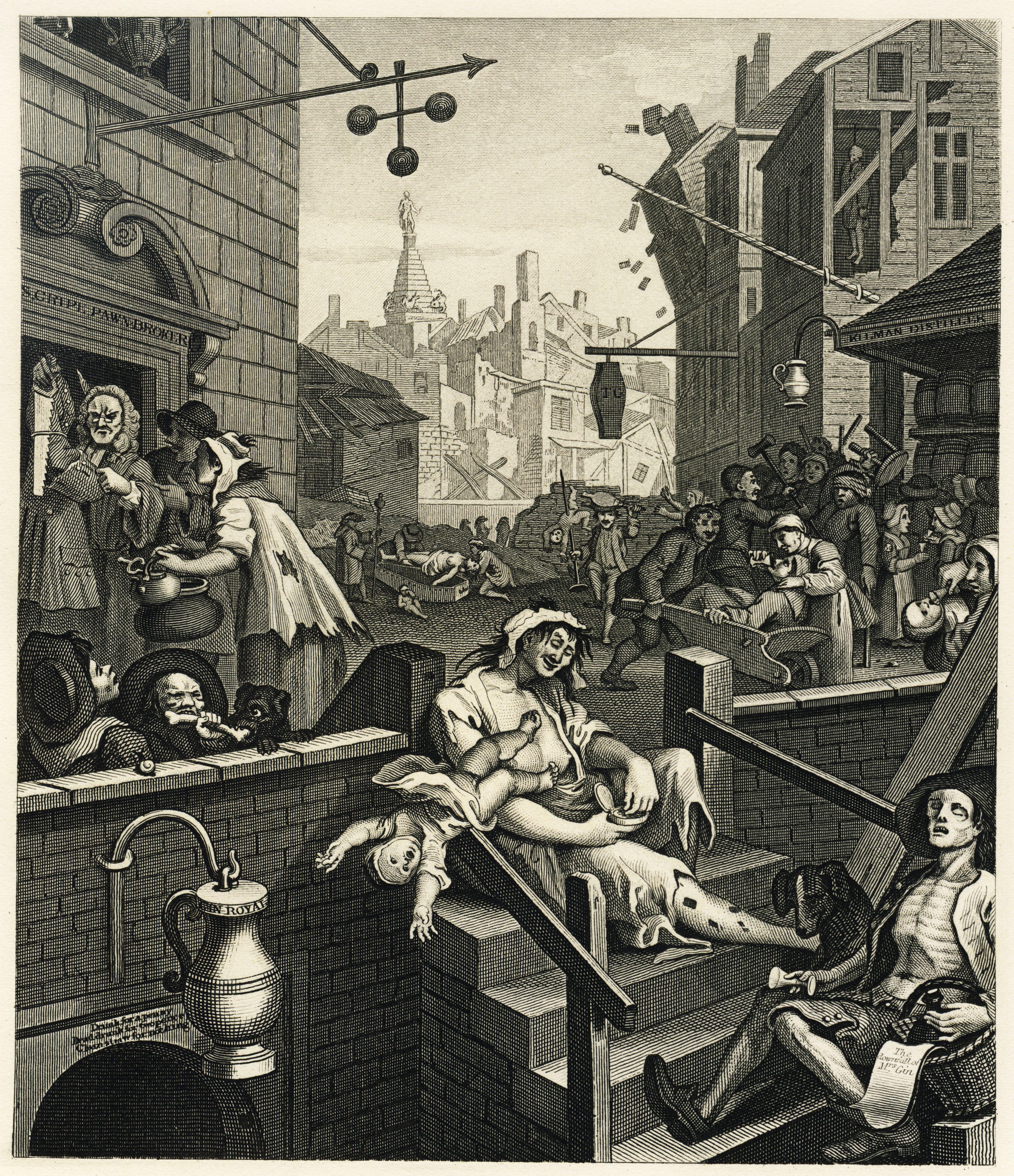
WilliamHogarth
